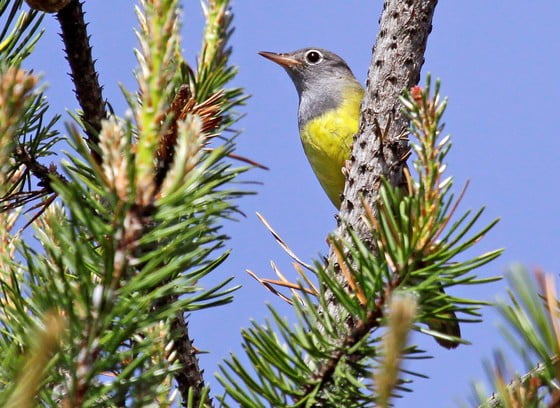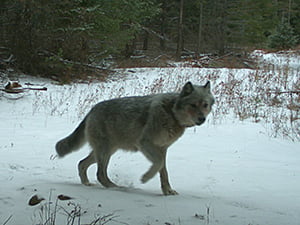
Wildfires are a devastating force of nature. Good forest management and positive public cooperation have minimized the risk of wildfire. Forest fires still happen though. Once the fire crews have contained and extinguished the fire, a whole new group sets to work. These dedicated individuals are rarely recognized for their astounding conservation efforts.
The one question at the top of everyone’s list is how long till the forest is replanted after wildfire? The answer is a lot harder than saying a timeframe. The truth is, it requires a team of naturalists, ecologists, and foresters. Each of these groups must evaluate the unique needs of each location. It isn’t as simple a ordering a bunch of trees and grabbing a shovel. These workers are restoring public lands and must ensure the job is done right the first time.

The Forester evaluates the level of fire damage. They decide if the standing trees are going to survive. Trees can be fairly resilient but like any form of life, only so much damage can be endured. You will often hear on the news, “Oh it was just long runs of crowning and torching”. It’s like suggesting a mugging victim is in good heath after having their lungs stolen. Leaves and Needles are the lungs of a tree. The greater the damage to the crown of the tree, the less likely it is to survive after a fire. A tree without leaves can lose 75% of it’s mass in 90 days without leaves to conduct transpiration.
Sometimes the damaged trees can be sold to help offset reforestation costs. Foresters call this a Timber Salvage Sale. Salvage sales are often spoken of after wind storms. After the forester has evaluated the land, they draft a plan to replant. I made that sound simple, but it’s sometimes a 2500 page document. Every last line meaningfully worded to ensure compliance and completion.

Ecologists step in after a fire to evaluate damage at steam edges and water sources. Natural springs and streams require special plantings to allow rainfall to filter into the land. In a healthy forest, you can feel that the ground is almost spongy. This is because of a layer of moss, fern, and tree fall. It is vitally important to replant these areas as soon as possible. These areas are called riparian areas. This is a complex term for the land surrounding water sources. Having these areas replanted quickly reduces erosion, and allows native animals to return to the area. The plantings also provide shade. This allows water to slowly soak into the land as it flows to nourish the forest.

Naturalists provide insights into fish and wildlife restoration efforts. Many times species must be reintroduced to an environment. A spring fire could disrupt nesting bird species, or fish spawning. In some eco systems, this could be devastating to local economies without intervention. The size of the fire is also a consideration. With smaller fires, animals will naturally migrate back into the recovery zone. In the case of larger fires, or Megafires as they’ve been coined, a more intensive effort may be needed. Large game animals such as deer and elk are reintroduced several years after tree planting has been completed.
After all of these groups have given their input, a plan is drafted. This planning is an opportunity to address what kind of trees will be replanted. Some land is planted for renewable forestry. Other pieces of land present the opportunity to restore a landscape. An example would be meadow restoration, or reintroducing a logged out species. These discussions guide the process. Repopulating the Redwood Forest is a prime example of species reintroduction.

Recreation experts may also weigh in during this process. Campgrounds, Fishing Access Sites, and Trailheads are often impacted by wildfire. These sites are a vital source of revenue for regional Nature Education Programs. They may offer recreation site recommendations during the long range recovery planning stage. These are the folks speaking up to make sure that “remote hunting camp” stays in the plans. Or the spring at “Jones Creek” has it’s drinking water outlet rebuilt.

Long before a wildfire happens, foresters fan out across the land like modern day Johnny Appleseed with a GPS. They gather pine cones and seed pods. Foresters carefully document elevation, location, and soil conditions. This information is saved into a table that can be laid out on a map. This allows foresters to collect a genetically diverse sample. Yes, plants have DNA too. This is what makes an Oak tree look slightly different from coast to coast. Seeds are collected throughout every type of forest and sent to a Seed Library for safe keeping. This explains why you ran into a forester in the middle of nowhere in the woods. They were gathering seeds and checking on old foresting efforts.

A Seed Nursery comes into play when large numbers of trees need to be raised. In Oregon, that means up to 200  trees per acre. Public land laws require responsible timber land use. The seed nursery begins seedlings based on the maps generated by Foresters when they collected seeds. It takes a full 2 years of growth before a sapling is stable enough to be planted in the forest. Hundreds of starts per bed are laid out and given ideal growth conditions. These seed start beds can be dozens of acres to raise stock for reforestation. Man has refined reforestation to a fine art, but their work must still unfold on natures timeline.
trees per acre. Public land laws require responsible timber land use. The seed nursery begins seedlings based on the maps generated by Foresters when they collected seeds. It takes a full 2 years of growth before a sapling is stable enough to be planted in the forest. Hundreds of starts per bed are laid out and given ideal growth conditions. These seed start beds can be dozens of acres to raise stock for reforestation. Man has refined reforestation to a fine art, but their work must still unfold on natures timeline.

While the seedlings are growing, the fire damaged land has a chance to rest. Much of the natural soil bacteria was  killed off in the area of the fire. Some grasses will begin to return within weeks of a fire passing through. The bright white and pink blossoms of fireweed are among the first plants to return to the forest. This attracts pollinators to strengthen the fire recovery cycle. When there is concern of erosion, or property damage, the area may be seeded. Roadsides tend to get hydro seeding. You may recognize that as the “Green goopy stuff” sprayed to help grass grown in new suburban neighborhoods. In more remote areas, seed bombs are sometimes used. These are a diverse bundle of seeds and soil bacteria dropped from a plane or helicopter to jumpstart the fire recovery cycle. You may have seen a type of seed bomb if you ever played with biodegradable Golf Balls that break down and grow wildflowers.
killed off in the area of the fire. Some grasses will begin to return within weeks of a fire passing through. The bright white and pink blossoms of fireweed are among the first plants to return to the forest. This attracts pollinators to strengthen the fire recovery cycle. When there is concern of erosion, or property damage, the area may be seeded. Roadsides tend to get hydro seeding. You may recognize that as the “Green goopy stuff” sprayed to help grass grown in new suburban neighborhoods. In more remote areas, seed bombs are sometimes used. These are a diverse bundle of seeds and soil bacteria dropped from a plane or helicopter to jumpstart the fire recovery cycle. You may have seen a type of seed bomb if you ever played with biodegradable Golf Balls that break down and grow wildflowers.

Once replanting has been done, it can take up to five years for the planted trees to fill out and regreen a landscape. Several additional plantings may be needed to fill out the canopy. There’s always a learning curve with each cycle of wildfire recovery. Not to give forests, presence of mind, but sometimes a forest decides a meadow needs to be in a different place after a fire. Foresters understand this quirk of nature and adjust plantings to compensate for these things. Wildfire can change a landscape but it also lays a layer of carbon that can sustain a forest for centuries.

You can find a fire recovery area in every state in America. These areas are often closed to vehicle traffic but allow  limited hiking. When hiking through a special use area, you should stay on the trail. Many times a series of signs will point out and explain why each action is taken. Take time to look for and identify which plants are there. Listen for bird and animal sounds. If you visit in the late spring, you might be treated to hummingbirds and butterflies. Through summer and as Fall advances larger wildlife such as elk and deer can be seen grazing. Along the trail, you may encounter a vista with a public participation opportunity.
limited hiking. When hiking through a special use area, you should stay on the trail. Many times a series of signs will point out and explain why each action is taken. Take time to look for and identify which plants are there. Listen for bird and animal sounds. If you visit in the late spring, you might be treated to hummingbirds and butterflies. Through summer and as Fall advances larger wildlife such as elk and deer can be seen grazing. Along the trail, you may encounter a vista with a public participation opportunity.
Researchers have placed signs to encourage photo documentation. These posts allow visitors to contribute a picture to supplement site visits. This results in a photo collection that can be compiled into a timeline and reviewed. The ability to see small changes over time helps to either prove or refute a scientific theory. In many cases the comparison is measured against natural regrowth. These areas make ideal class field trip sites. There is a wealth of educational material for instructors to work with.
Whether wildfire is human caused or natural, it can take decades to regrow. Todays foresters will likely not see the end result of their work until they retire. Managing our Public Lands for future generations is a big job. Think of all of the unsung heroes of Forestry the next time you spend time on Public Land.
For further information check out the links below:
Smokey Bear
The United States Forest Service
Or Contact your State Forester

